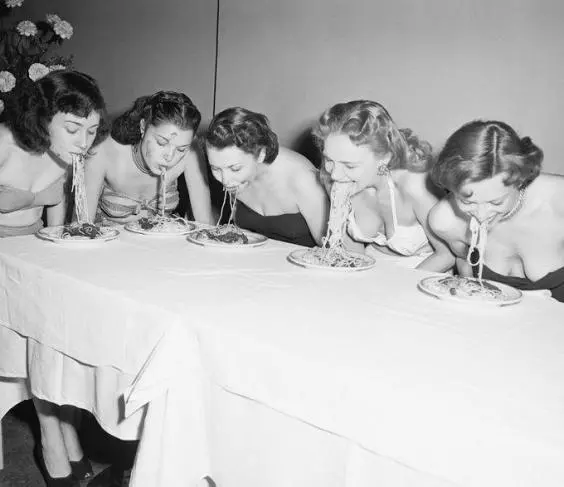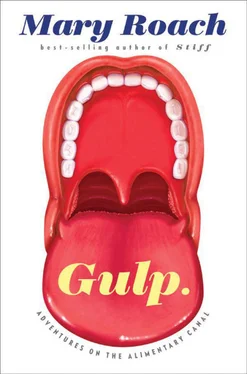In a 2006 issue of the Lebanese Medical Journal , Farid Haddad details the efforts of Ahmad ibn Aby al’Ash‘ath, a court physician in Iraq circa A.D. 950, to document the compliancy of a lion’s stomach. In his opening paragraph, Dr. Haddad notes that ’ ash ‘ath means “disheveled.” It seems an unlikely name for a royal physician, but a brief spin through the man’s writings sheds some light: “When food enters the stomach…, its layers get stretched; I observed this in a live lion which I dissected in the presence of Prince Ghadanfar…. I proceeded to pour water in the lion’s mouth and continued to pour jug after jug in its throat; and we counted until the stomach filled up with about [5 gallons]…. I then cut open the stomach and let the water out; the stomach shrank and I could see the pylorus. God is my witness.”
The agriculturally informed reader may be unimpressed by the five-gallon capacity of the lion’s tank. A cow’s rumen—the largest of its four stomach compartments—is the size of a thirty-gallon trash can. Why should this be, when all a ruminant needs to do to get dinner is lower its head and graze? When food carpets the land from hoof to horizon, famine isn’t a concern. So why the massive intake? The answer lies in the relatively low nutritional value of the ruminant diet. It is not merely the size of the cow’s rumen that resembles a garbage can, it is the contents. The first place I visited for this book was the University of California at Davis, where animal science professor Ed DePeters and his colleagues test organic waste by-products to see whether they might make good cattle feed. With the help of a fistulated cow, DePeters has tested the digestibility of almond hulls, pomegranate scrap, lemon pulp, tomato seeds, and cotton seed hulls. He is a modern-day William Beaumont, lowering mesh bags of experimental foods into the rumen, and then pulling them out by a string at intervals to see what remains. The day I visited, they had been testing prune pits from nearby Yuba City, “the prune capital of the world.” [63] Excuse me, I mean the Dried Plum Capital of the World. The change was made official in 1988, as part of an effort to liberate the fruit from its reputation as a geriatric stool softener. Yuba City has Vancouver, Washington, to blame for that. The original Prune Capital of the World, Vancouver was the home of the Prunarians, a group of civic-minded prune boosters who, back in the 1920s, touted the laxative effects of dried plums. The Prunarians also sponsored an annual prune festival and parade. A 1919 photo reveals a distinct lack of festiveness and pruniness. Eight men in beige uniforms stand in a row across the width of a rain-soaked pavement. A ninth stands on his own just ahead of the row, similarly attired. Presumably he is their leader, though you expect a little foofaraw from an entity known as the Big Prune. Or the Big Dried Plum, as Yuba City would like you to call him.
Cows, by virtue of the plentiful and varied bacteria in their rumen, are able to derive energy from things that would pass through a human undigested. The prune pit has a hard, nutritionally blank hull, but the embryo inside provides protein and fat. Rumen bacteria can break down the hull and free these nutrients, though it takes them a few days. DePeters showed me one of the mesh bags. “Sometimes I put a midterm exam in there,” he said. Cows can’t digest wood pulp. “I tell my students, ‘The cow didn’t digest that material any better than you did.’”
“We’ve done cloth from a plant in Petaluma that was making cotton towels. All the small linters that didn’t get into the towels? You can feed ’em. They can break it down. They get energy from it. It’s just slower.” As with hay and grass, it takes a sizable serving of tea towel for a cow to get its RDA—hence the enormous volume of the rumen. DePeters speculates that there’s another reason for the huge capacity of the rumen. Ruminants graze on the open plain, easily visible and vulnerable to predators. “So they’ll go out and graze and take in a lot, then go and hide somewhere to ruminate and digest.” The rumen is a built-in to-go box.
DePeters took me to visit one of the fistulated cows. Escorted by an entourage of large flies, we made our way through a grid of muddy corrals. I was in kitten heels and a skirt, a fact from which DePeters, in filth-encrusted rubber boots and worn T-shirt, derived lasting merriment. DePeters is tanned and tall, with a wiry build. His hair is the same reflective silver of the screeching aluminum gates. It works well with his eye color, the deep dusty blue of scrub-jay plumage.
Cow 101.5 was getting a hose bath from one of DePeters’s students, Ariel. Ariel and her array of piercings posed a welcome challenge to the stereotype of the conservative male ag major. We stood by, watching and waving away flies. I like the look of cows: the art-directed hide, their hips under their skin, the meditative sideways metronomics of the jaw.
The fistulated—or “holey,” as the students like to say—cow has been an ag-school standard for decades. My husband Ed recalls, as a child, hearing from his dad about the cow at Rutgers with “a window in its side.” The operation is simple. The bottom of a coffee can is traced with chalk on the cow, a topical anesthetic applied, and the circle cut from the hide, along with a matching opening in the rumen. The two holes are stitched together and the hole is outfitted with a plastic stopper. It is little more barbaric than the earlobe plugs of my local Peet’s barista or Ariel’s facial adornments. “The animal rights people come out here expecting a glass window with a sash and sill,” said DePeters. He handed me a protective plastic veterinary sleeve that extended to my shoulder and directed me to position myself to the side of the opening. When a fistulated cow coughs, if it has been eating, wet plant matter sometimes blows out of the hole.
DePeters took some photographs of me with my right arm in 101.5. The cow appears unmoved. I look like I’ve seen God. I was in all the way to my armpit and still could not reach the bottom of the rumen. I could feel strong, steady squeezes and movements, almost more industrial than biological. I felt like I’d stuck my arm into a fermentation vat with an automated mixing paddle at the bottom, and I basically had.
Ancient man was omnivorous—a scavenger as much as a predator. Often enough, his steak dinner was shared with millions of potentially harmful bacteria. Thus the human stomach, unlike the ruminant’s, concerns itself with disinfection more than holding capacity. But even scavenged meals were sporadic, and some degree of storage was needed. How compliant is the human stomach? That depends on what you use it for.
10. Stuffed
THE SCIENCE OF EATING YOURSELF TO DEATH


ON APRIL 22, 1891, a fifty-two-year-old carriage driver in the city of Stockholm swallowed the contents of a bottle of prescription opium pills. Mr. L., as he became known, was found by his landlord and taken to a hospital, where the staff got busy with the tools of overdose: a funnel, a length of tubing, and lukewarm water to flush out and dilute the drug. The technique is known today as pumping the stomach, but in the case report it was referred to as gastric rinsing. The term gives a deceptive air of daintiness to the proceedings, as though Mr. L.’s stomach were a camisole in need of a little freshening. Hardly. The patient was slumped in a chair, thinly attached to his wits, while the medics loaded his stomach, multiple times in fast succession. With each filling, the organ appeared to hold more, which should have been a clue. Mr. L. had sprung a leak.
Читать дальше














